
Get matched with top carpenters in Ijamsville, MD
Enter your zip and get matched with up to 5 pros
Need a pro for your carpentry project in Ijamsville, MD?
TRUSTED BY IJAMSVILLE, MD HOMEOWNERS
4.6
Average homeowner rating784
Verified carpentry services reviews
Verified Reviews for Carpentry pros in Ijamsville, MD
*The Angi rating for Carpentry companies in Ijamsville, MD is a rating based on verified reviews from our community of homeowners who have used these pros to meet their Carpentry needs.
*The HomeAdvisor rating for Carpentry companies in Ijamsville, MD is a rating based on verified reviews from our community of homeowners who have used these pros to meet their Carpentry needs.
Last update on December 03, 2025
Find Carpenters in Ijamsville
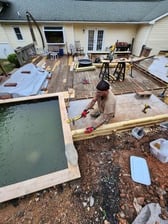
All Phase Home Improvement Services
All Phase Home Improvement Services
All Phase Home Improvement Services is a local, family owned company who takes great pride in our experience, expertise, quality, and customer service that we provide to meet every consumer's needs. It is our mission to provide excellent customer service from start to completion of a project. To understand the needs and expectations of our customers, we take great care to work and communicate with every customer in a personal and professional manner. Our reputation is based on service, safety and quality, regardless of how large or small the job. We specialize in a variety of home improvement needs consisting of but not limited to: Kitchen and bath remodel, Finished basements, Custom interior trim, doors & windows, Building and refinishing decks, Drywall installation & finishing, Masonry & masonry repair, Landscaping & retaining walls, small coi ponds, etc. So if you would like to turn those Home Improvement dreams into reality, let us help you first by offering a free estimate.
"Perfect"
Kenneth J on June 2024
All Phase Home Improvement Services is a local, family owned company who takes great pride in our experience, expertise, quality, and customer service that we provide to meet every consumer's needs. It is our mission to provide excellent customer service from start to completion of a project. To understand the needs and expectations of our customers, we take great care to work and communicate with every customer in a personal and professional manner. Our reputation is based on service, safety and quality, regardless of how large or small the job. We specialize in a variety of home improvement needs consisting of but not limited to: Kitchen and bath remodel, Finished basements, Custom interior trim, doors & windows, Building and refinishing decks, Drywall installation & finishing, Masonry & masonry repair, Landscaping & retaining walls, small coi ponds, etc. So if you would like to turn those Home Improvement dreams into reality, let us help you first by offering a free estimate.
"Perfect"
Kenneth J on June 2024

Greer Unlimited LLC
Greer Unlimited LLC
Greer Unlimited LLC is a premiere full service roofing contractor that operates out of Westminster, MD. We pride ourselves on high quality work and precise attention to details. Call today!
"We are very happy with the finished project! Our enclosed porch/sunroom far exceeded our initial designs! It's our favorite room of the house! Lance was extremely easy to work with and always accommodating with our suggestions/additions to the project! Lance and his respectful crew consistently cleaned up at the end of each work day."
Karen T on July 2023
Greer Unlimited LLC is a premiere full service roofing contractor that operates out of Westminster, MD. We pride ourselves on high quality work and precise attention to details. Call today!
"We are very happy with the finished project! Our enclosed porch/sunroom far exceeded our initial designs! It's our favorite room of the house! Lance was extremely easy to work with and always accommodating with our suggestions/additions to the project! Lance and his respectful crew consistently cleaned up at the end of each work day."
Karen T on July 2023
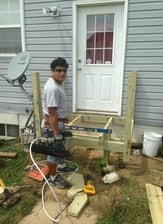
Fred Contractors
Fred Contractors
Fred Contractor, is committed to excellence in every aspect of our business. We uphold a standard of integrity bound by fairness, honesty and personal responsibility. Our distinction is the quality of service we bring to our customers. Accurate knowledge of our trade combined with ability is what makes us true professionals. Above all, we are watchful of our customers interests, and make their concerns the basis of our business.
"Super friendly and cleaned up each day."
Robin W on February 2023
Fred Contractor, is committed to excellence in every aspect of our business. We uphold a standard of integrity bound by fairness, honesty and personal responsibility. Our distinction is the quality of service we bring to our customers. Accurate knowledge of our trade combined with ability is what makes us true professionals. Above all, we are watchful of our customers interests, and make their concerns the basis of our business.
"Super friendly and cleaned up each day."
Robin W on February 2023

Divine Landscaping, Inc.
Divine Landscaping, Inc.
Divine Landscaping, Inc. We aim to listen, satisfy and serve by consistently exceeding the expectations of both our commercial and residential clients. Staffed with Degreed Professionals, University of Maryland, Penn State, Ohio State. Members of the International Society Arboriculture, Certified in Pesticide Md. and Maryland Home Improvement licensed, IPC Certified, Bonded and Licensed. Have a personal Consultation with a Professional. FREE ESTIMATE
"They are pricey for the amount of time spent on the project but worth it."
Marvin B on March 2022
Divine Landscaping, Inc. We aim to listen, satisfy and serve by consistently exceeding the expectations of both our commercial and residential clients. Staffed with Degreed Professionals, University of Maryland, Penn State, Ohio State. Members of the International Society Arboriculture, Certified in Pesticide Md. and Maryland Home Improvement licensed, IPC Certified, Bonded and Licensed. Have a personal Consultation with a Professional. FREE ESTIMATE
"They are pricey for the amount of time spent on the project but worth it."
Marvin B on March 2022

JCB Handyman/ Masonry
JCB Handyman/ Masonry
JCB Handyman/Masonry offers experienced finish carpentry, framing, and general handyman work in Carroll county MD Contact us today for an estimate!
"Stopped the leak which is most important."
Ryan C on October 2025
JCB Handyman/Masonry offers experienced finish carpentry, framing, and general handyman work in Carroll county MD Contact us today for an estimate!
"Stopped the leak which is most important."
Ryan C on October 2025

Charlie Ornamental LLC
Charlie Ornamental LLC
Our mission is to be a provider that brings back the personal touch with our customers. We will build a relationship that will last a lifetime after you see our quality work. As a locally owned and operated business we feel invested in our clients and constantly strive for customer satisfaction. We won't leave until the job is done right! Call or click to schedule an estimate today!
"Charlie Ornamental LLC did an excellent job with replacing an anchor rail and painting the entire railings. He made the initial meeting on time, performed a review of the issues and gave me a price. When the weather allowed, he completed the job in a timely manner. I would use and recommend him again."
Tony H on June 2025
Our mission is to be a provider that brings back the personal touch with our customers. We will build a relationship that will last a lifetime after you see our quality work. As a locally owned and operated business we feel invested in our clients and constantly strive for customer satisfaction. We won't leave until the job is done right! Call or click to schedule an estimate today!
"Charlie Ornamental LLC did an excellent job with replacing an anchor rail and painting the entire railings. He made the initial meeting on time, performed a review of the issues and gave me a price. When the weather allowed, he completed the job in a timely manner. I would use and recommend him again."
Tony H on June 2025
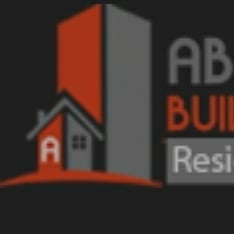
Absolute Building and Construction
Absolute Building and Construction
Absolute Building and Construction has steadily grown from a small construction company, begun in 2000. We construct and manage projects ranging from minor interior renovations to some of the most complex commercial, public and industrial facilities in our region. Our approach to each project is always cooperative with client and designer satisfaction as the determining factors for success. Our innovative approach to pre-construction services and our self-performed capabilities allow us to deliver solutions that most often exceed our clients expectations. Our reputation is our greatest asset. We know that our reputation is built each and every day by the way we treat our clients, design teams and vendors. At Absolute Building and Construction, our employees are committed to our mission of, Achieving excellence in construction while enhancing the lives of all involved. This means holding ourselves to the Absolute highest ethical and professional standards, always doing what is fair. Call us today for your Remodeling needs! All electrical and plumbing services are subcontracted out to properly licensed companies
"Excellent. The workmanship was superior, and the time it took to finish all renovations was minimal. A, B, & C should be at the top of everyone's list for overall home remodeling."
William B on November 2021
Absolute Building and Construction has steadily grown from a small construction company, begun in 2000. We construct and manage projects ranging from minor interior renovations to some of the most complex commercial, public and industrial facilities in our region. Our approach to each project is always cooperative with client and designer satisfaction as the determining factors for success. Our innovative approach to pre-construction services and our self-performed capabilities allow us to deliver solutions that most often exceed our clients expectations. Our reputation is our greatest asset. We know that our reputation is built each and every day by the way we treat our clients, design teams and vendors. At Absolute Building and Construction, our employees are committed to our mission of, Achieving excellence in construction while enhancing the lives of all involved. This means holding ourselves to the Absolute highest ethical and professional standards, always doing what is fair. Call us today for your Remodeling needs! All electrical and plumbing services are subcontracted out to properly licensed companies
"Excellent. The workmanship was superior, and the time it took to finish all renovations was minimal. A, B, & C should be at the top of everyone's list for overall home remodeling."
William B on November 2021
Killian's LLC
Killian's LLC
We are a locally owned and operated company. We value honesty and integrity in all aspects of our business. We offer a variety of home improvement services that are customized to each individual project. We pride ourselves on the quality of our work, as well as our commitment to outstanding results. We look forward to building lasting relationships with our clients and guarantee your satisfaction!
"Quick, efficient and done well."
Matthew C on September 2025
We are a locally owned and operated company. We value honesty and integrity in all aspects of our business. We offer a variety of home improvement services that are customized to each individual project. We pride ourselves on the quality of our work, as well as our commitment to outstanding results. We look forward to building lasting relationships with our clients and guarantee your satisfaction!
"Quick, efficient and done well."
Matthew C on September 2025

Elite General Construction LLC
Elite General Construction LLC
We are a locally owned and operated company that values honesty and integrity and treats your home as if it were our own. We have many years of experience to give you confidence that we are your number one choice for your next home project. You will find us to be competitively priced with close attention to the details. We look forward to building a lasting relationship and guarantee your satisfaction!
"The job was done with multiple cancellations and changes after the contract was signed. This is on the contractor side. The person he hired to do the house power wash left a portion of the house under the deck unwashed. The contractor took my personal information l provided to Angi and transferred it to another website without my consent. I will not use this contractor again. I am also considering not using Angi again. I think the company has gone downhill from what it was. Maybe it is managed by new owners."
Blessing G on August 2025
We are a locally owned and operated company that values honesty and integrity and treats your home as if it were our own. We have many years of experience to give you confidence that we are your number one choice for your next home project. You will find us to be competitively priced with close attention to the details. We look forward to building a lasting relationship and guarantee your satisfaction!
"The job was done with multiple cancellations and changes after the contract was signed. This is on the contractor side. The person he hired to do the house power wash left a portion of the house under the deck unwashed. The contractor took my personal information l provided to Angi and transferred it to another website without my consent. I will not use this contractor again. I am also considering not using Angi again. I think the company has gone downhill from what it was. Maybe it is managed by new owners."
Blessing G on August 2025
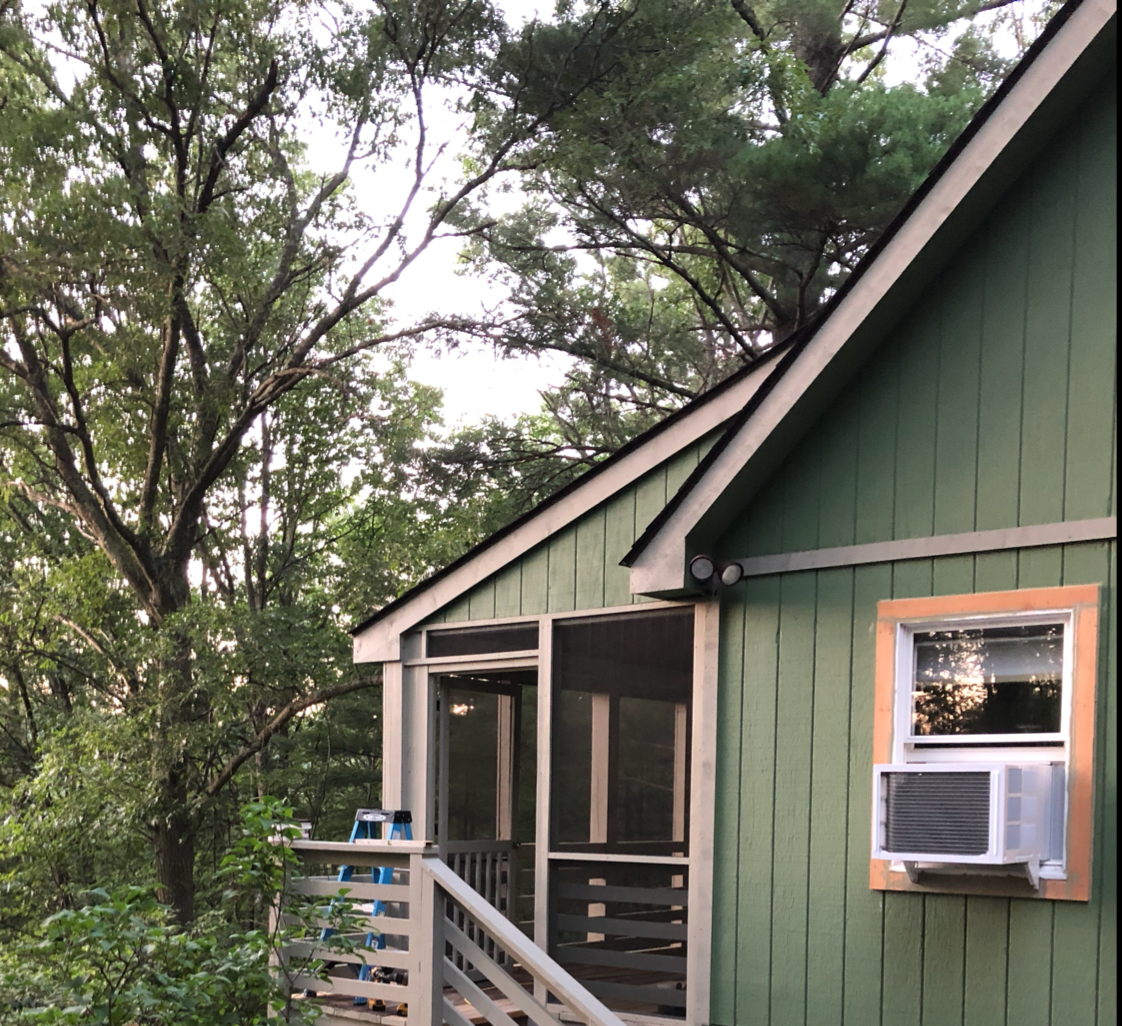
Arms Home Improvement
Arms Home Improvement
ARM’s Home Improvement has been in business since 2013. After 26 years of working for the same home improvement/construction company, working his way to Vice President, Allen Metcalf, 4th generation carpenter, started Arm’s Home Improvement Company. At ARM's Home Improvement, we believe in providing the highest quality work, timeliness, clear communication throughout the entire process and client satisfaction. We specialize in residential construction, such as kitchen and bathroom remodeling. We can help you conceptualize your visions and turn them into reality. Please contact us today to schedule your free in-home estimate! We can show you 3D walk-through of your kitchen, bath or basement remodel. We are also a LEAD SAFE RENOVATOR. See more pictures and visit us on our Facebook page https://www.facebook.com/ArmsHomeImprovement/
"Allen is an excellent carpenter; we had the banister & railing updated; along with the stair threads. We also had the risers reinforced. Hands down, very happy with Allen & his services. My neighbors were so impressed; they also hired him."
Eric L on October 2025
ARM’s Home Improvement has been in business since 2013. After 26 years of working for the same home improvement/construction company, working his way to Vice President, Allen Metcalf, 4th generation carpenter, started Arm’s Home Improvement Company. At ARM's Home Improvement, we believe in providing the highest quality work, timeliness, clear communication throughout the entire process and client satisfaction. We specialize in residential construction, such as kitchen and bathroom remodeling. We can help you conceptualize your visions and turn them into reality. Please contact us today to schedule your free in-home estimate! We can show you 3D walk-through of your kitchen, bath or basement remodel. We are also a LEAD SAFE RENOVATOR. See more pictures and visit us on our Facebook page https://www.facebook.com/ArmsHomeImprovement/
"Allen is an excellent carpenter; we had the banister & railing updated; along with the stair threads. We also had the risers reinforced. Hands down, very happy with Allen & his services. My neighbors were so impressed; they also hired him."
Eric L on October 2025
The Ijamsville, MD homeowners’ guide to carpentry services
From average costs to expert advice, get all the answers you need to get your job done.
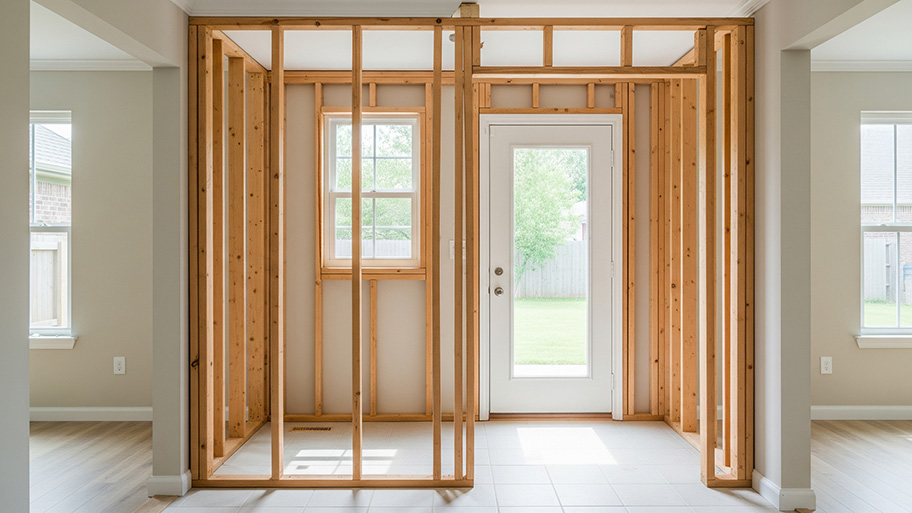
Sometimes, all your home needs is a new wall to make a room or provide an updated function to an existing space. Learn how much it costs to install a new wall.
 •
•Curious how much general contractors charge per hour? Discover hourly rates, key cost factors, and tips to save on your next home project.

Installing a dumbwaiter can save you time and energy. Learn how much a dumbwaiter costs with this guide.

The best questions to ask contractors are about protecting your interests and the investment you are making in your home.

Build a strong and safe home of your dreams. Master the completion of a sturdy structure with these comprehensive steps on how to frame a wall for your home.

Many homeowners are unsure about tipping contractors, and if so, how much. This quick guide will help you understand whether you should tip.
- Monrovia, MD Carpenters
- New Market, MD Carpenters
- Linganore, MD Carpenters
- Clarksburg, MD Carpenters
- Urbana, MD Carpenters
- Damascus, MD Carpenters
- Buckeystown, MD Carpenters
- Frederick, MD Carpenters
- Adamstown, MD Carpenters
- Mount Airy, MD Carpenters
- Ballenger Creek, MD Carpenters
- Boyds, MD Carpenters
- Libertytown, MD Carpenters
- Walkersville, MD Carpenters
- Germantown, MD Carpenters
- Dickerson, MD Carpenters
- Beallsville, MD Carpenters
- Braddock Heights, MD Carpenters
- Lisbon, MD Carpenters
- Woodbine, MD Carpenters
- Point Of Rocks, MD Carpenters
- Montgomery Village, MD Carpenters
- Gaithersburg, MD Carpenters
- Woodsboro, MD Carpenters
- Darnestown, MD Carpenters
- Jefferson, MD Carpenters
- Washington Grove, MD Carpenters
- Poolesville, MD Carpenters
- Redland, MD Carpenters
- Middletown, MD Carpenters
- Woodworking in Ijamsville
- Cabinet Makers in Ijamsville
- Decks And Porches in Ijamsville
- Doors in Ijamsville
- Windows in Ijamsville
- Stair Companies in Ijamsville
- Contractor in Ijamsville
- Deck Maintenance in Ijamsville
- Deck Repair in Ijamsville
- Gazebos in Ijamsville
- Treehouse Builders in Ijamsville
- Patio Covers in Ijamsville
- Install Stair Railings in Ijamsville
- Sauna Installation in Ijamsville
- Closets in Ijamsville
- Window Shutters in Ijamsville
- Window Shutter Repair in Ijamsville
- Cabinet Contractors in Ijamsville
- Window Door Contractors in Ijamsville
- Dock Building Repair in Ijamsville
- Handyman Service in Ijamsville



